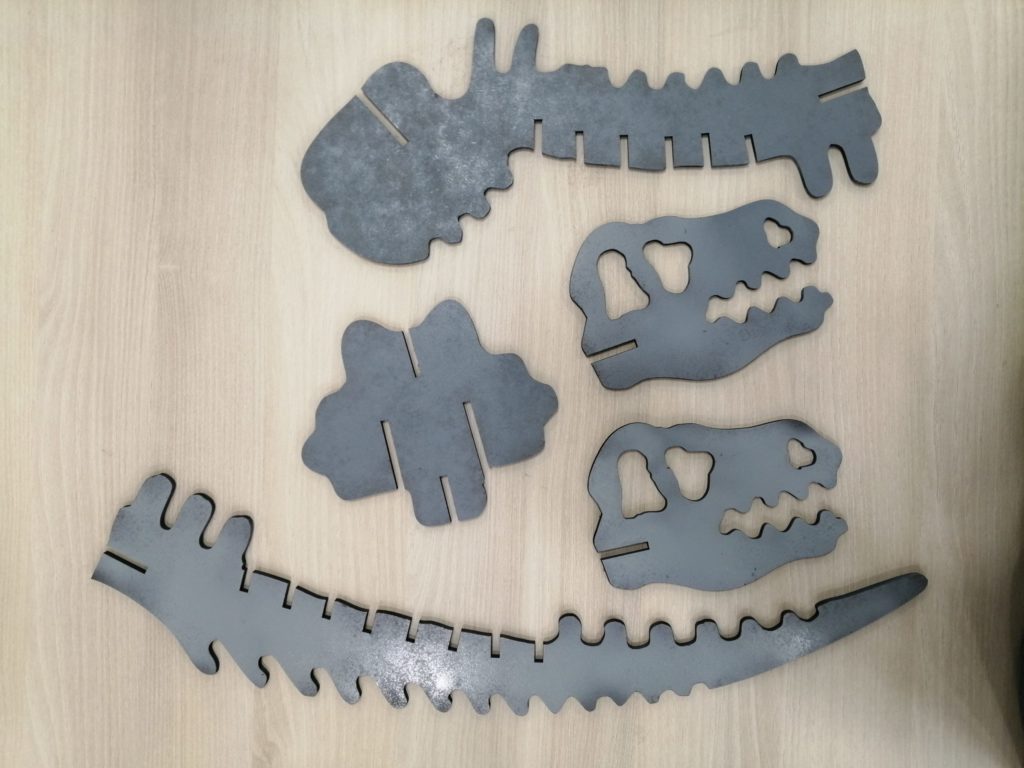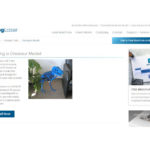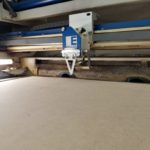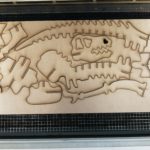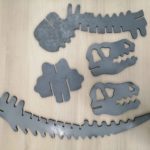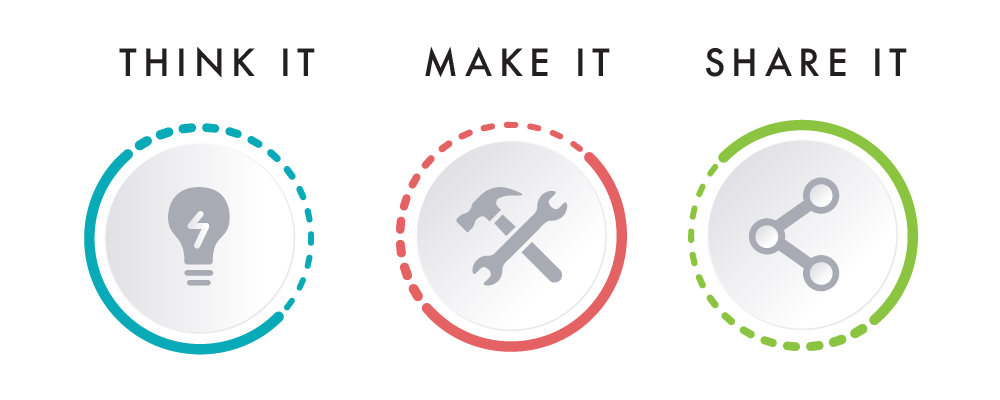This section describes the different steps followed to produce a Laser Cut T-Rex press-fit kit at the Fab Lab.
Step – 1 : Download the Design

The design was downloaded as vectors from the Epilog Laser website in .CDR format, which can be opened using Corel Draw software.
However, the downloaded design was based on 60cm x 60cm, 6.35mm thick boards, and we wanted to use boards with the dimensions 80cm X 40cm, 5.6mm thick, so some the design required some editing.
To do that, the design was first saved in .DXF format, and editing was done on AutoCad.
Step – 2: Import to AutoCad for Editing
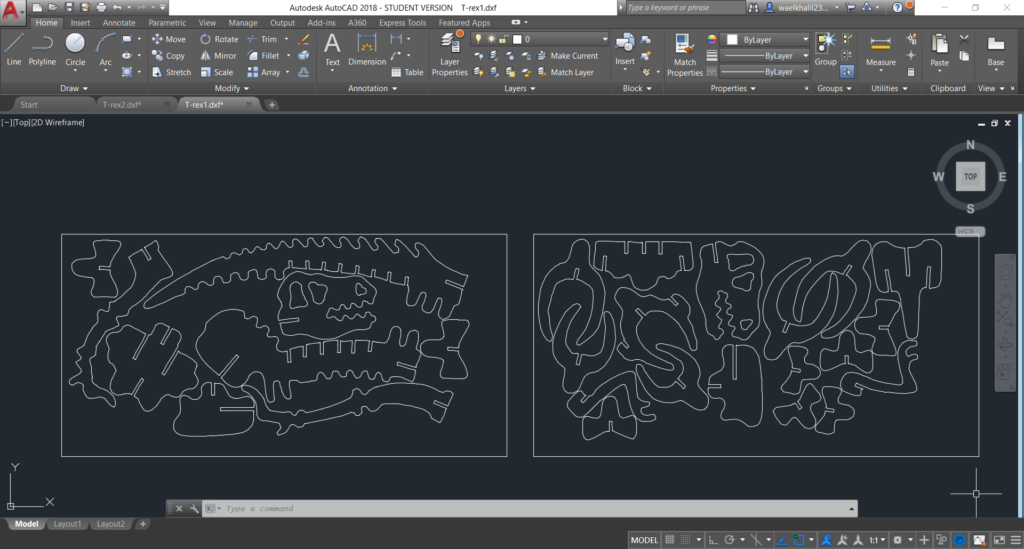
Import the design to AutoCad first. The original design had various parts that were nested on 3 separate boards. So we had to group some components of the 3rd board with the other boards so that all parts can fit on two “80 cm x 40 cm” boards, which were available.
Next, we scaled down the design a little bit, since original design is based on 6.35mm thick boards, and we will be using 5.6mm thick boards, so scale the design in such a way that the gaps for the joints are 5.5mm instead of 6.
Once the design is ready and the final shape of the object is reached, the next step is to save the object in .dxf format, so that we can open it on any preparation software before we push the job to the Laser Cutter.
Step – 3: Prepare Your File For Laser Cutting

To prepare the Laser Cutting job, you should open the digital design file in a preparation software and choose the best settings that would achieve the best final result. In this example, we used Corel Draw as a preparation software.
- Import the digital design file into CorelDraw by selecting “File” > “Import” > Choose you file from location.
- Choose Your Material: Typically you may have an idea about what kind of material you will use before you laser cut. This is very important to choose the best settings required for the chosen material. Preferred settings for different material can be found in the Machine’s Catalogue. Best settings are usually chosen based on experience and previous tests done. In this example we will be using MDF.
- Choose Job Type: “Vector” was selected, as we are only cutting in this example.
- Choose Your Cutting Parameters: The next step is then deciding on the different parameters for cutting, the “Vector Settings”. We have to choose the best settings we need to have the best result. There are different variables that affect the final product coming out of the Laser Cutter. Among those variables are the Power and Speed. In this example the following settings were used: Speed: 8%, Power: 100%, Frequency: 10
- Forward the Job: After choosing all the variables, send the order to the laser cutter. But before pressing Play on the Laser cutter, we have to manually set it up the printer with respect to the material we intend to use.
Step – 4: Setting Up The Laser Cutter
After preparing the file and the relative settings we need, the next step is to place the material we want in the laser cutter and set it up according to the thickness of the material.
To cut and engrave on our laser cutter, the following procedure was followed:
- Set the focus of the laser using the V shaped Gauge.
- Set the zero position of the laser on the top left corner of the MDF sheet.
- Turn On the Air compressor and ventilators .
Step-5: Perform The Cut
This is when the magic happens!
Press the play button on the laser cutter, and voila, it starts cutting.
Step-6: Remove Your Parts, Paint Them, then Assemble
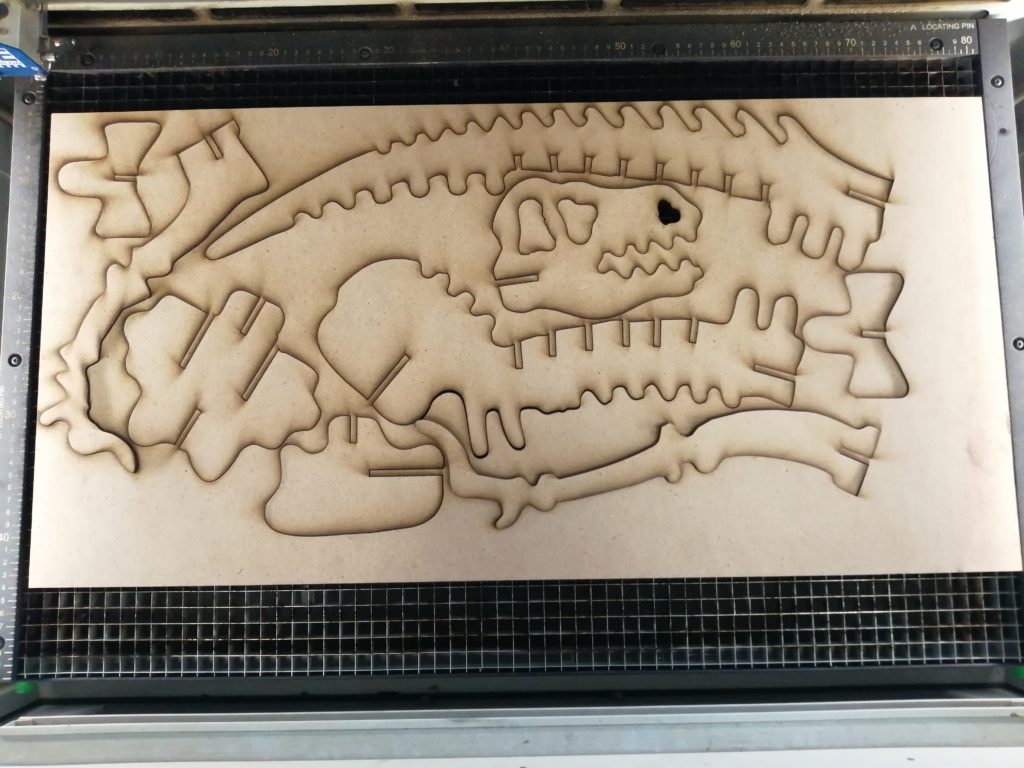
Remove the laser parts from the cutting bed after it cools down and all the fumes are sucked out of the machine.
Additional post-processing steps are performed after cutting, such as brushing off powder, cleaning burnt sides, and painting.
Once all parts are clean and paint is dry, assemble your project and enjoy.
